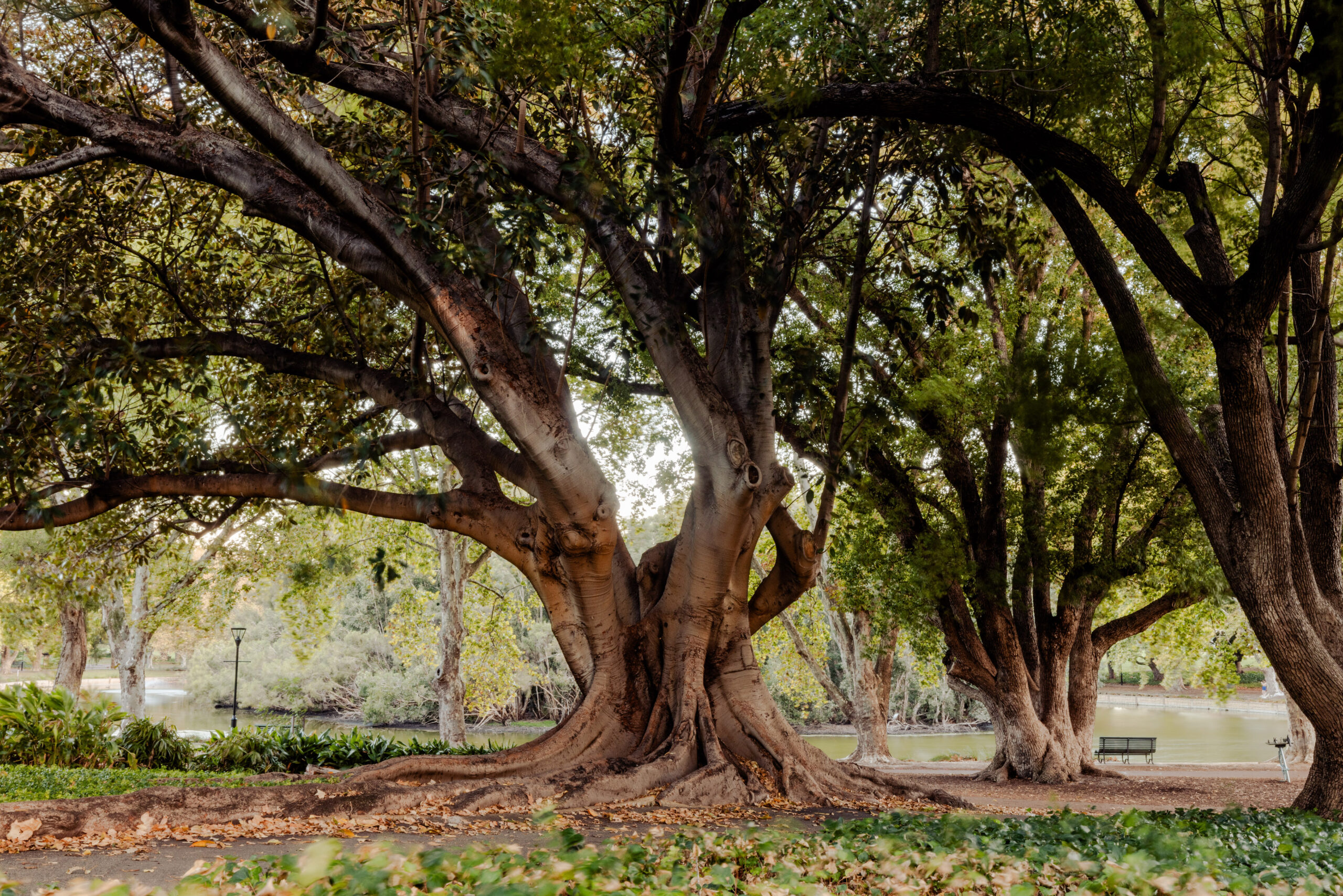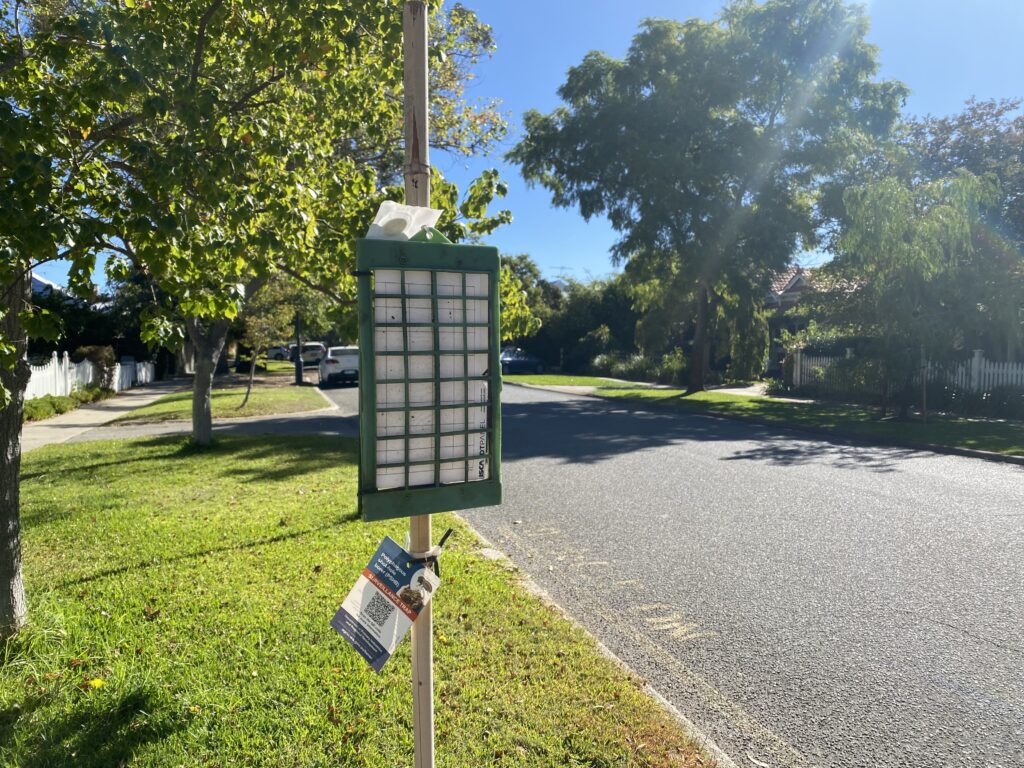Hyde Park, Northbridge. A lush green park with two central lakes, surrounded by hundred-year-old fig and maple trees.
It’s loved by dog walkers, native birds and friends drinking cheap wine.
But recently, the City of Vincent has committed to the removal of 20% of Hyde Park’s trees to combat an invasive beetle: the polyphagous shot-hole borer (PSHB).
While only the size of a sesame seed, the borer not only threatens our Chu Bakery picnic-under-the-trees antics but also over 400 different species of trees in Perth.
While cutting these trees down could seem drastic, it provides an exciting opportunity to engage with the Aboriginal heritage and more recent history of the park.
PSHB, WHO?
The polyphagous shot-hole borer (Euwallacea fornicatus) is proving to be pesky due to the outsized impact it can have on trees.
It bores into trees and creates thousands of little tunnels, bringing with it a nasty Fusarium fungus. Wherever the borer goes, the fungus follows, because they rely on each other for survival.
With so many beetle tunnels, it reduces the structural integrity of the tree, often causing them to drop limbs and die.
The borer hails from Southeast Asia but crossed the globe to decimate trees in California, Israel and South Africa before arriving in Western Australia.
PSHB tends to avoid our WA native trees. However, some of its favourites are the figs and maples present in Hyde Park. With so many of our public parks and garden spaces under threat, it’s important for action to be taken.
This jet-setting beetle is costing Australia $41.29 million for eradication costs and potentially up to $6.8 million per annum to manage urban forests.
We’ve seen evidence of the chaos the borer can cause in California, where it’s been for over 20 years. It’s estimated to cost up to US$600 million per year and continues to pose a threat.
TRAPS … SURVEILLANCE … ACTION!
The borer was detected in Fremantle in 2021. In early 2024, the Department of Primary Industries and Regional Development (DPIRD) declared it a national biosecurity risk.
But how do we tackle this invasion, and what tools can we use to get this bug to bug off?
As well as removing trees, DPIRD has set up 3100 ‘sticky traps’ around Perth to detect the borer.
Not only can the traps catch beetles, they can inform the surveillance team where the beetles are and where they could move to.
Unfortunately, no matter how many sticky traps are put up or how many trees are removed, there’s no way to entirely stop the borer’s threat, meaning that management will need to be ongoing.
Dr Vincent Lanoiselet is the Chief Plant Biosecurity Officer at DPIRD. His job is to oversee the entire plant biosecurity program at a state and national level.
“About 20% of the trees at Hyde Park are infested with PSHB and will need to be removed,” Vincent says. “If left untreated … PSHB could significantly impact our urban tree canopies.”
A LOSS FOR THE COMMUNITY
City of Vincent Mayor Alison Xamon says “it’s pretty devastating to lose all these trees”.
Many City of Vincent locals are also devastated, from walking groups to gardeners and other community members. Losing these trees could change the park that these locals have known their whole life.
However, removing infested trees can stop the spread of PSHB to healthy trees. Vincent says that removing some trees will help to save many.
Whilst losing these trees is sad, it provides the City of Vincent with an opportunity to restore Hyde Park to its original glory.
Utilising original plans from the 1890s and collaborating with Traditional Owners can ensure Hyde Park will remain a culturally significant site and haven for wetland animals while still being a dog walking, picnic having and jogging paradise.
TO THE FUTURE
To restore Hyde Park, the City of Vincent has appointed a consulting group, which includes landscape architects, historians, biodiversity experts and Traditional Owners from the Whadjuk Noongar Nation.
Mayor Xamon says the group will use their diverse skills to ensure Hyde Park remains true to its heritage and purpose. To do this, they’re going to be drawing on the original plans of Hyde Park.
The City of Vincent Parks and Garden team, following advice from the consulting group, will replant Hyde Park with suitable species.
There is ongoing research to determine what these suitable species are, but they will have high levels of shade, provide food for native animals and attract native birds.
It’s also important that the trees will be resilient to potential future biosecurity threats and our changing climate.
“We want to plant as many trees as we possibly can,” Mayor Xamon says. “There’ll be lots of large trees. [It will be] a beautiful haven for local fauna and for people to come and enjoy it.”
Vincent says he is “humbled and privileged” to deliver these programs around Perth to protect our trees, agricultural industries and, ultimately, Western Australia’s way of life.
Soon enough, we’ll all be back to drinking cheap wine, walking our dogs and having kookaburras stealing our croissants.













